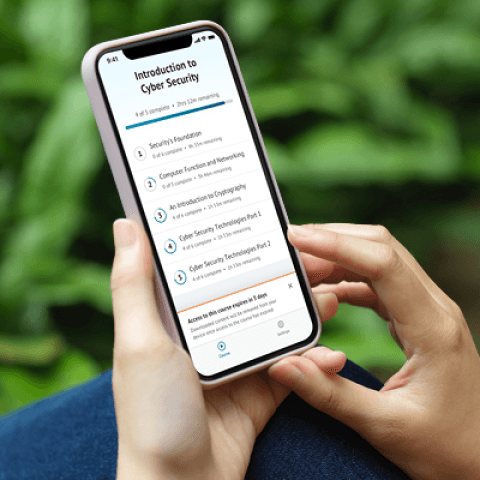SEC595: Applied Data Science and AI/Machine Learning for Cybersecurity Professionals


Experience SANS training through course previews.
Learn MoreLet us help.
Contact usBecome a member for instant access to our free resources.
Sign UpWe're here to help.
Contact Us
Apply your credits to renew your certifications
Attend a live, instructor-led class at a location near you or remotely, or train on your time over 4 months
Course material is geared for cyber security professionals with hands-on experience
Apply what you learn with hands-on exercises and labs
Analyze real-world attacks and gain the hands-on training you need to respond to ransomware or cyber extortion incidents.
Ryan makes sure the course content is up-to-date and gives us extra tools that are really helpful. Also, he keeps the class energetic and easy to follow, he's a great instructor.
FOR528: Ransomware and Cyber Extortion isn’t just hands-on — it’s frontline. Built entirely from real ransomware and extortion cases, this course prepares responders to face the attacks organizations fear most. You won’t just study ransomware in theory — you’ll investigate it the way it actually happens, using authentic artifacts and adversary tradecraft pulled from live incidents. You’ll even build and run live ransomware in a controlled lab to see how it behaves and examine leaked source code to understand how encryption really works. From initial intrusion through exfiltration and encryption, you’ll practice the full response lifecycle and tie technical findings into organizational recovery and communication.


Ryan Chapman has redefined ransomware defense through hands-on leadership in major incidents like Kaseya and by arming thousands with proactive threat hunting tactics now standard across the industry.
Read more about Ryan ChapmanExplore the course syllabus below to view the full range of topics covered in FOR528: Ransomware and Cyber Extortion.
Section 1 begins with a review of ransomware’s history, as we deep-dive into the roles, processes, communication methods, and activities related to these threats. After learning how we can apply incident response practices, we begin our deep-dive into the Windows-based forensic artifacts best suited to ransomware campaign analysis.
Ransomware incidents often follow familiar patterns. In Section 2, you'll learn to detect these recurring tactics, techniques, and procedures (TTPs) through hands-on labs and analysis.
Section 3 covers Privilege Escalation, Credential Access, and Lateral Movement, detailing tools ransomware actors use to escalate privileges, access credentials, and dump processes. You’ll explore lateral movement methods like RDP, SMB (PsExec), and WinRM.
Our CTF challenge consists of 50 questions pertaining to a specially crafted attack scenario against our victim organization.
Monitor the organisation’s cybersecurity state, handle incidents during cyber-attacks and assure the continued operations of ICT systems.
Explore learning pathResponsible for identifying and assessing the capabilities and activities of cybersecurity insider threats; produces findings to help initialize and support law enforcement and counterintelligence activities and investigations.
Explore learning pathResponsible for analyzing digital evidence from computer security incidents to derive useful information in support of system and network vulnerability mitigation.
Explore learning pathResponsible for investigating cyberspace intrusion incidents and crimes. Applies tactics, techniques, and procedures for a full range of investigative tools and processes and appropriately balances the benefits of prosecution versus intelligence gathering.
Explore learning pathExecute digital forensic operations under demanding conditions, rapidly extracting critical intelligence from diverse devices. Leverage advanced threat hunting and malware analysis skills to neutralize sophisticated cyber adversaries.
Explore learning pathThis expert applies digital forensic skills to a plethora of media that encompasses an investigation. If investigating computer crime excites you, and you want to make a career of recovering file systems that have been hacked, damaged or used in a crime, this may be the path for you. In this position, you will assist in the forensic examinations of computers and media from a variety of sources, in view of developing forensically sound evidence.
Explore learning pathAnalyze network and endpoint data to swiftly detect threats, conduct forensic investigations, and proactively hunt adversaries across diverse platforms including cloud, mobile, and enterprise systems.
Explore learning pathThis role investigates, analyzes and responds to cyber incidents. Find the SANS courses that map to the Incident Response SCyWF Work Role.
Explore learning pathWhen purchasing a live, instructor-led course, add 4 months of online access. View price in the info icons below.
Add 6 months of hands-on skills practice. Add to your cart when purchasing your course.
The course presented real-life scenarios and detection mechanisms to enhance your organization's security posture to detect and prevent ransomware before it can cause damage to your operations.
The course is pack filled with highly valuable information that will take your company to the next level of being prepared for ransomware.
The content is engaging, and has shown me plenty of new open-source tools.

Get feedback from the world’s best cybersecurity experts and instructors

Choose how you want to learn - online, on demand, or at our live in-person training events

Get access to our range of industry-leading courses and resources